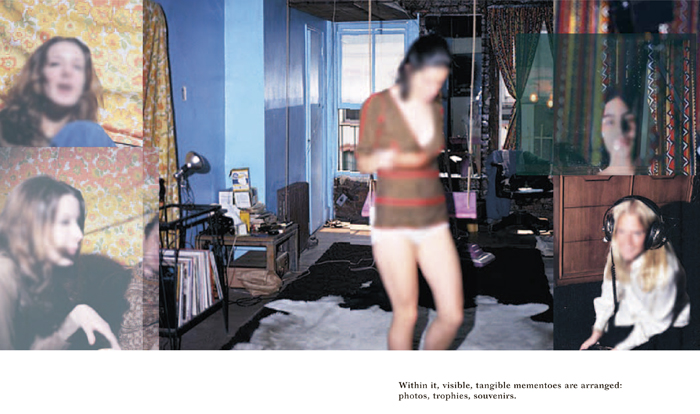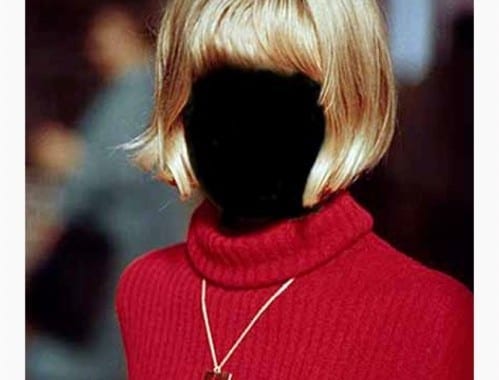
“What makes these pictures so unsettling?”
A book with photographs taken by a serial killer connected to texts written by John Berger,
which also happens to be the alias the killer was using when committing his crimes?
I am certainly intrigued…
Fanny Landstrom interviews photography collector Brad Feuerhelm for ASX on M.F.G Paltrinieri’s and Mirko Smerdel’s ‘The Looking Game’, October 2013
The Looking Game is the first installment in the research project, ’SubNarratives’, curated by M.F.G Paltrinieri and Mirko Smerdel, published by Akina Books. It is divided into what can be seen as five parts, or sections: Intro, Biography, Statement, Main body of work, and Appendix. The first three sections are pretty self-explanatory. The fourth is what is the outcome of what is explained in the three first sections. And the fifth I still haven’t gotten my head around.
Rodney James Alcala is a serial killer and rapist convicted for five murders, two homicides, and suspected of many rapes and violent crimes in California and New York committed between 1970-1980. Apart from this, he was also an amateur photographer and was once a minor TV celebrity taking part in the show, ’The Dating Game’ (1978), whilst at the same time being at the peak of his career as a murderer of women. On the run from the Californian police, Alcala adopted the alias John Berger – just like the art critic made famous for his writing and the BBC TV-series ‘Ways of Seeing’. Over a 1000 of photographs taken by Alcala were found in a storage locker after his arrest. In May 2010, 120 of them were released online in an attempt to identify the women in the photographs. This book is playing with the notion of Alcala’s supposed awareness of John Berger and tie in some of his writing to the still unidentified women that are featured.
Being a rather unusual project I felt that it shouldn’t be dealt with in the same manner as a traditional photobook. Brad Feuerhelm is a photography collector, writer, and dealer located in London. His collection is specialized in vernacular photography with minor focus on crime, death, and medical imagery, among other genres. It felt appropriate to ask him about his thoughts and opinions on The Looking Game…

FANNY LANDSTROM: What was your first reaction or initial response to this book?
BRAD FEUERHELM: I guess being a collector or photographic murderabilia, my first feeling was one of definite interest, followed directly by a nagging but necessary critical response as to how the book was going to be handled by the people in making it. I had a fear that there would be a problem of over-aestheticizing the trauma or ”arting out” some very specific trauma in a controversial manner that would provoke a response for the benefit of the artists status…
FL: In the statement, the artists pose the question, ’What is it that makes these pictures so unsettling”?, and gives us some possible reasons for this… What is your answer/-s to that question?
“Well, its context related really. The images themselves are not unsettling. What remains unsettling is the use of blur and blacking out of faces found in the back of the book.”
BF: Well, its context related really. The images themselves are not unsettling. What remains unsettling is the use of blur and blacking out of faces found in the back of the book. It’s unsettling to `’see” this form of negation while also trying to continue an “its ok, cause we are alerting the public and helping find the girls” attitude, which is really not what is happening here. If that were the case, they could have published the original URL in the book to be helpful, which they did not. The use or abuse of Berger’s text also creates a space where the skin of discourse is peeled back in almost Lynchian unfamiliarity… i.e. the ”artist/editor has expressed an intent to make a very harrowing police case more lucid and transgressive… adding a fascinating layer, but one which we must discuss… pictures of pretty girls by themselves are not necessarily unsettling. The voyeurism is not enough to question the stalker/murder implication… it is enforced through the choice of the artists/editor and the use of obscuring identity for the sake of their “subnarrative”. It is a clear choice and one that should question their intent outside of the aesthetic choice… and sociological impulse to discuss the topic. Does this practice represent cyclical victimization?
FL: The artists seek to explore the question, is it a coincidence that Alcala used the alias John Berger, or is there is a link between alias and actions? Presumably it, ’opens up room for unexpected dialogue between Alcala’s images and some of Berger’s texts and thoughts’. What do you think about their way of connecting the pieces together? Is it needed to create a project like this? Is there anything that you think they could/should have done differently?
BF: I think that the Berger tool is what makes this ART/PHOTO specific instead of a criminology study. I find it interesting, but again the Berger quotes used are problematic as the words chosen are there to heighten the feeling of oncoming nausea we have when applying these words to the images that in themselves are not powerful outside of the context of traumatic discourse. I do feel it’s interesting, but I cannot dispel a notion of forced sensationalism in the work that is perehaps not shallow, but potentially very vulgar. This is tough subject matter to work with and that is not to say it should not be done. I applaud the graphic qualities and the idea of such a book… I just think that the project borders on the crass repetition of human error in redistribution of victimization for the sake of ego of the edit and the potential notoriety of the artist duo.
“I just think that the project borders on the crass repetition of human error in redistribution of victimization for the sake of ego of the edit and the potential notoriety of the artist duo.”
FL: I guess the book is so heavily edited to emphasize the construction of possible links between Alcala and Berger’s writing, and that a construction of Alcala’s photographs and Berger’s texts into suggested narratives/relationships has been made by the artists. What do you think of the layout and the editing of the book?
BF: I like the first bit, but think the text layout is a bit jarring and should have been considered more in line with the heaviness of the subject matter instead of the floating un-centered text. Again the associations of the writing, though nice to re-read, are intentionally de-contextualized to promote a distinct and palpable sense of dread… this is somewhat abusive of Berger’s seminal texts.
FL: Being the first installment of a research project, how do you think this book fits in to a context like that?
BF: I would love to see what they do next, but I suspect this book was the one they wanted to share to gain interest in their practice, first. I suspect the next ”research project”… I don’t see this as research… I see this a conceptual practice masquerading as sociological research… will be much more benign.
FL: What do you think are their reasons were for initiating this project? Do you think they succeed with this?
BF: I think they saw an interesting parallel between a criminal case study and the medium of photography. I don’t take any umbrage to this… but I do still have the feeling that it has been dressed up with ”concerned photography” as a tool to get through the criticism, which I feel will not pass. I am excited when I see things like this and I do ”like” the idea… I just think perhaps we need to be careful of our contradictions. When you talk about it being useful to placing identity to the victim’s and finding answers… you cannot, in the same book, obliterate their faces for artistic practice. Its too cyclical and self-absorbed. Let’s hope that they do not enter into the commercial arena with these photographs where they exhibit for sale the blacked out faces…this currency will not stand and would be in a small way, a promotion of the serial killer’s aesthetics and desires. I did not know of Alcala before this book and perhaps that also poses another question…
[nggallery id=557]
http://akinabooks.com/the-looking-game/
http://www.discipulaeditions.com/shop/the-looking-game
(Text @ Fanny Landstrom and ASX, Images @ M.F.G. Paltrinieri & Mirko Smerdel and the Orange County D.A.’s Office)
